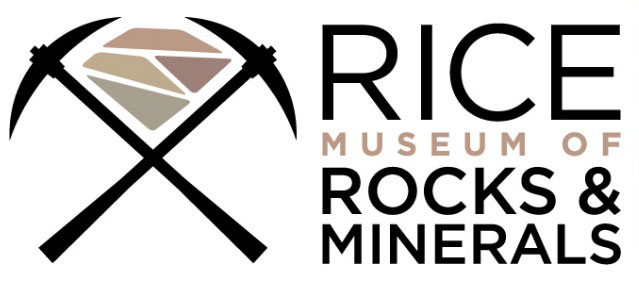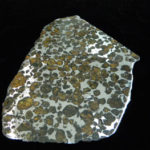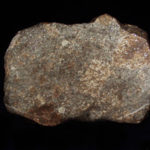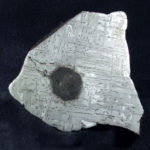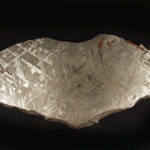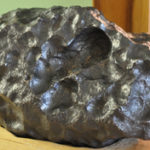The Rice Northwest Rock and Mineral Museum is home to many “out of this world” meteorites, most of them prepared and presented by the Cascadia Meteorite Laboratory of Portland State University. On a visit to the museum, you will have a chance to touch our amazing Gibeon Meteorite from Africa. There is so much iron in that meteorite, it feels really cold to the touch.
Meteorites are naturally occurring objects that come from space and survive penetrating the Earth’s atmosphere. Most meteorites originate in the asteroid (an object in space too small to be a planet) belt between Mars and Jupiter, but some meteorites are pieces of Mars or the moon.
Every May, the Museum celebrates our annual Meteorite and Family Fun Day. Until them, let’s learn more about meteorites.
There are three main types of meteorites: stony, stony-iron and iron.
The most abundant type of meteorite is the stony meteorite, which accounts for over 90% of all recorded meteorite falls. The subgroup chondrites are most abundant. Iron meteorites account for ~5% of all meteorite falls.
Meteorite sizes vary greatly from small (dust) to large (5 to 7 miles wide). The frequency with which the Earth is bombarded by meteorites depends on the meteorite’s size. Small meteorites impact the Earth very frequently, whereas large meteorites impact much more rarely.
Meteorites are named after the locations where they are found. Oregon meteorites include an iron meteorite from Klamath Falls, a stony meteorite from Salem, an iron meteorite from Sams Valley, and an iron meteorite from Willamette.
Here is information about the specific types of meteorites.
Stony Meteorites
The stony meteorites are composed of mostly rocky material (silicate minerals) and contain a small amount of iron and nickel. There are two main types of stony meteorites chondrites (have never been melted) and achondrites (melted and thus differentiated such that heavy metals sank to the core and the lighter silicates floated).
Stony-Iron Meteorites
The stony-irons are made up of an almost equal mixture of iron-nickel metal and silicate minerals. Pallasites are a common example of stony-iron meteorites.
Iron Meteorites
Iron meteorites are composed primarily of iron and nickel metal. These meteorites most likely represent the metallic cores of asteroid bodies.
More Information on Meteorites
To help you learn more about meteorites in general, here are some helpful educational resources and articles.
- Meteorite – Wikipedia
- Cascadia Meteorite Laboratory of Portland State University
- The Meteorite Exchange – Learn About Meteorites & Meteors
- Meteorite Information
- Death by meteorite – Bad Astronomy | DiscoverMagazine
- NOVA | Diamonds in the Sky
- Meteorite Carries Ancient Water from Mars – Scientific American
- World’s Only Known Natural Quasicrystal Traced to Ancient Meteorite – Scientific American
- The best meteorites are found in Antarctica – Slate Magazine
- Nasa’s Curiosity rover finds large iron meteorite on Mars | Stuart Clark | Science | The Guardian
